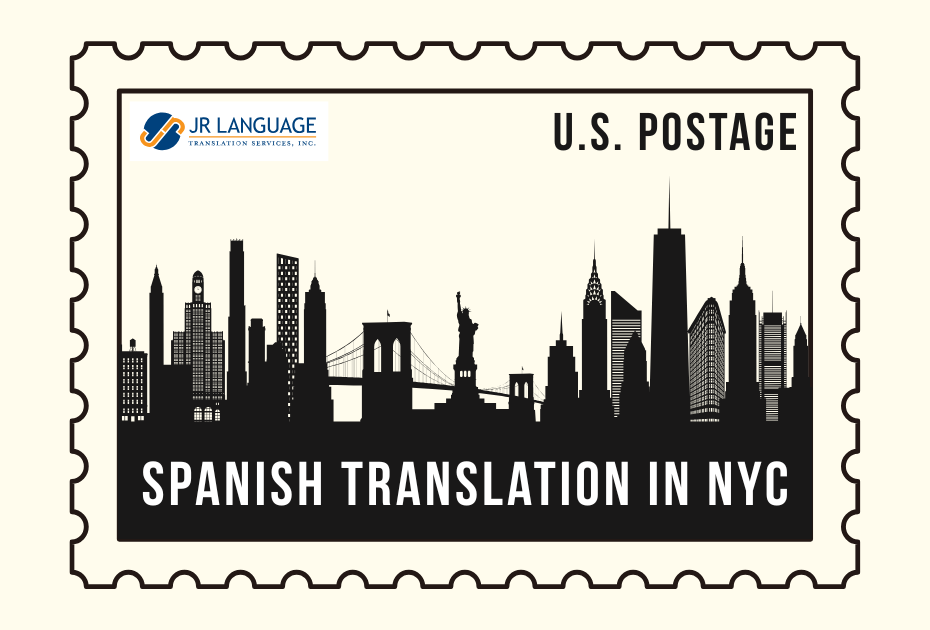
If you’ve ever eaten a taco, used shampoo, or said “kindergarten” out loud, you’ve already used a loanword—a word or phrase borrowed from one language and used in another, often without translation. Most speakers, however, may not be aware of these linguistics and dialects enriching our dictionary.
Loanwords show cultural exchange and how languages evolve through trade, travel, immigration, and technology. In professional translation services, loanwords must be handled carefully and precisely. At JR Language Translation Services, we specialize in delivering accurate, culturally relevant translations across more than 100 languages. With a history of loanwords going both ways, Spanish translation service is our most requested language service.
What Are Loanwords?
Loanwords are terms one language borrows from another. Over time, they become part of the vocabulary of borrowing language. Loanwords often emerge in technical or academic contexts, frequently first introduced in written language for scholarly, scientific, or literary purposes. Many foreign words retain their original spelling and meaning, while there are other words adopted to local pronunciation, grammar, or usage.
Integrating a different language or new loanword involves interaction, adaptation, and adoption into the borrowing language. For organizations needing Spanish business translations and Spanish interpretation, for example, knowing when to keep a loanword and when to localize it is critical for clear communication.
The History of English Loanwords
English has historically borrowed words from other languages, especially Romance languages. In the early Germanic period, English began incorporating Latin words. Many of these were related to religion, trade, and governance. The Norman Conquest brought many French words into the Old English lexicon.
The Middle English period saw a further influx of French, Latin, and other European languages. The Early Modern English period was marked by the Renaissance and colonial expansion. This brought in words from various European high cultures and other new languages. Today, the English language is far more diverse, enriched by different languages.
Loanwords Fun Facts: Did You Know?
Many loanwords are associated with cuisine—no surprise! Food is one of the most immediate and tangible ways cultures interact.
Think of:
- Meals like ‘taco’
- Drinks like ‘coffee’ or ‘café’
- Spreads such as ‘marmalade’
- Salads like ‘coleslaw’
These are borrowed from languages such as Spanish, French, Italian, Portuguese, and Dutch.
English and Spanish: A Two-Way Street
Spanish and English speakers have been borrowing from each other for centuries. As a result, loanwords flow both ways—especially in places like the U.S., where both languages are widely spoken.
Spanish Loanwords in English:
- Taco, burrito, quesadilla: Now on American menus. These are examples of lexical borrowing, where words from one language are adopted into another.
- Patio: A word borrowed from Spanish that’s become standard in architectural vocabulary.
- Rodeo: Originally Spanish for “round-up,” now a recognized term across the American West.
English Loanwords in Spanish:
- Sándwich: Borrowed from English, “sandwich” is now used throughout Latin America and Spain. The word ‘sándwich’ is pronounced similarly to its English counterpart, showcasing how some loanwords retain their original phonology.
- Fútbol: Adapted from “football” (but refers to soccer, not American football).
- Marketing: Used in professional settings instead of the Spanish equivalent mercadotecnia.
These borrowings highlight the cultural and linguistic exchanges between Spanish-speaking and English-speaking communities. Native speakers often use them without realizing the source language.
French and German Loanwords: Style and Structure
Both French and German have given English and Spanish many loanwords, often perceived as foreign words due to their retained original pronunciations and forms. These loanwords often carry specific cultural or stylistic connotations that can complicate translations.
Examples:
- Déjà vu (French): Kept in both English and Spanish for its nuance.
- Kindergarten (German): Used in English, but in Spanish it’s typically translated as jardín de infancia.
Hindi Loanwords and Global Influence
While not as common in Spanish, Hindi has given English new words that sometimes filter into Spanish through English media or pop culture.
Examples:
- Pajamas (from pāyjāma): Borrowed into English, then widely adopted.
- Guru: Used metaphorically in business and personal development contexts.
What Are Loanwords in Japanese?
While not as common in Spanish, Japanese loanwords have entered English—and occasionally Spanish—through media, technology, and global culture.
Examples:
- Konpyūtā (コンピューター): Derived from “computer,” this word is fully integrated into Japanese vocabulary and widely recognized through tech and gaming culture.
- Manshon (マンション): Borrowed from “mansion,” but in Japanese, it refers to a modern apartment or condominium. This shift in meaning shows how loanwords can evolve in their adopted language.
When translating content referencing Japanese terms or concepts—whether in anime, electronics, or fashion—JR Language ensures that every word is thoughtfully adapted for your target audience.
Translation vs. Localization: Going Beyond the Words
Loanwords often require localization, not translation, to ensure they are accurately adapted from the donor language to the target language. For example, an English word might be technically understood in Spanish but carry a different cultural weight—or none at all.
Take the English word “resume.” In Spanish, it can’t be translated as resumen when referring to a job application—it becomes currículum or hoja de vida. JR Language includes localization services in our Spanish translations—to ensure you’re understood and well-received.
Real-World Examples: Spanish Language Translation in Action
Imagine translating a U.S. fast-food menu into Spanish for a Latin American audience. You might keep loanwords like taco and nachos, but you’d need to translate or describe items like “chicken tenders” or “sliders.”
Or consider translating a user manual for a medical device from English to Spanish. Precision is key. Our Spanish translators won’t assume a borrowed English term is understood—they’ll research industry-specific terminology and consult subject-matter experts to get it right in the native language.
Trust JR Language for Expert Spanish Translations
Loanwords are one of many reasons why automated or literal translation can’t replace human expertise. At JR Language, we provide professional English-to-Spanish translation services with a team of skilled native linguists with the knowledge and expertise to understand the nuances of both languages.
Whether you need to:
- Translate technical documents
- Localize marketing materials
- Provide multilingual customer support
- Convert websites and apps into Spanish
…we’re here to help you communicate with confidence.
How We Incorporate Loanwords in Spanish Translations
At JR Language, we:
- Assess each loanword.
- Use industry-approved alternatives when needed.
- Localize tone and word choice for your Spanish-speaking audience.
- Work with native Spanish translators who understand both language and culture.
Whether your content is for Spanish-speaking countries or U.S. Hispanic communities, our translation company adapts the Spanish version to your target audience. What works in one Spanish-speaking market might not work in another. Many sectors, such as healthcare, education, technology, law, and government, heavily rely on our translations to engage with global clients and partners.
Let Us Help You Interact in Spanish with Confidence
Loanwords prove that languages evolve and influence one another. Using them correctly requires expertise and a willingness to learn about their origins and proper usage. In the world of Spanish translations, one borrowed word used incorrectly can change the entire meaning of a sentence.
Our translation agency goes beyond word-for-word translation to bring your message to life in Spanish—accurately, culturally, and effectively. Let JR Language be your partner in delivering Spanish translations that connect and convert. Contact us today to get started on your next project!



